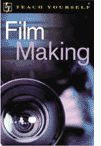Reviews:
Reporter World provides a variety of safety equipment, identification products, specialized high-visibility clothing, pertinent news, product reviews, book reviews and useful links specifically for reporters, writers, assignment editors, news correspondents, journalists, ENG crews, photographers, production staff, directors, segment producers, media security personnel, and freelancers: in short, anyone who is part of the news gathering, information reporting, or documentary film industries.
In this section we review various products and services of relevance to reporters, writers, correspondents, ENG teams and production staff. These products include cameras and accessories; computer hardware and software; scanners; printers; books and other products. Smaller, mini-reviews, are also available in other sections of this site including Products, Books and Movies.
We are constantly adding additional reviews to this section. If you have any suggestions for other products you would like us to review, simply e-mail us using the feedback address on our Terms of Service page. Please supply us with as much information as you can about the product (including name, manufacturer, model number) or book (including title, author, ISBN and publisher).
 Title: Teach Yourself Film Making Title: Teach Yourself Film Making
Author: Tom Holden
Copyright: © 2002
Publisher: Teach Yourself Books
ISBN: 0-07139824-4
Relevance: Teach Yourself Film Making provides a short, but solid, introduction to the intricate processes involved in making a film and is of interest to those seeking to enter the field. The book gives great advice and pointers on the creative, logistical and technical elements of film making and provides many tips to film-making beginners. Film Making can also be used by reporters, correspondents and others who are in front of the camera to further understand the big picture of how films (and other presentations) are created.
Review: Part of the very popular British series, Teach Yourself..., Film Making is a great introduction to the complex and often rocky road to making a feature movie, documentary, short film or even info-commercial. By his own words, we quickly learn that author Tom Holden assumes his readers know "nothing" about making a film. Consequently, we were not surprised to read his first chapter outlines the obvious requirements involved with film making: a script, a telephone, a word processor (or typewriter); audacity and ingenuity, motivation and determination, confidence, be organized, free time, nerves of steel (or at least of tensile copper), creativity, a camera (funny how this obvious requirement placed so far along in the list), and people to be used as actors.
After this somewhat simplistic introduction, however, Holden gets down to brass tacks and provides a step-by-step guide to create a reasonably professional video- or film-based story. Scriptwriting is tackled next. Here, author Holden provides the basics on how scripts are created, the differences between novel writing (i.e., what readers read) and script writing (i.e., what moviegoers see in the theater), how long a "typical" script should be, and addresses a key issue that haunts inexperienced scriptwriters: in what format should the script be printed?
After scriptwriting, Holden provides valuable information about casting and rehearsals. The book delves into how to approach production studios, how to look for a script and even how to go it alone. Throughout this chapter, Film Making includes lots of tips to make the rehearsal process go smoother and hopefully, faster. One of the more interesting and valuable aspects of the book is the occasional sidebar crammed with extra-useful bullet points for newbies to remember.
How not to pander...
The sidebar, including casting and rehearsal tips, outlines how to organize yourself and your project. As well, Film Making supplies suggestions on producer and directorial behavior: underscoring how not to pander to people who feel it is their right to change the script, ensuring that everyone knows what your story is about, and why each character is the way he or she is.
Next, Holden explains the two main "branches" of cameras used in film production: video and film. Main features of the different types of cameras are discussed and main formats (Video8, VHS, and S-VHS) outlined. Holden takes time to list the pluses and minuses for each format, a section undoubtedly very helpful to beginners who are presumably not knowledgeable about the technology of film making itself.
Some of the formats mentioned, however, are older ones, likely not applicable to professional or semi-professional film making. Holden knows this and makes no apologies for his strategy, saying the older formats are ones that may be encountered by new film makers. After all, he argues, older formats are typically both cheaper and more ubiquitous than the newer, more technologically advanced, formats. The inclusion of older formats underscores the beginner's tone and target market of this book.
Film cameras including Super 8 mm, 16 mm and Super 16 mm, as well as the out-of-reach-for-the-beginner, 35 mm are discussed. Interestingly, Holden gives specific examples of popular films that have been created with different types of cameras. For instance, This is Spinal Tap and the low budget film, Clerks, were both shot using 16 mm technology. Director Oliver Stone swapped between various camera formats to create the different effects in Natural Born Killers. Another example that Holden uses is The Blair Witch Project in which a camcorder and black and white 16 mm film were used to achieve many of the film's effects.
Film Making also takes time to teach beginning film making techniques and includes a number of important (yet likely unknown-to-beginners) tips. These include: how to prevent equipment theft, transporting your camera, protecting your equipment from the elements, using a tripod properly, using color filters -- and various other tricks of the trade.
How to light your set, achieve specific lighting effects and use a location monitor are also covered -- as is a basic overview on how to position your actors. While it is safe to assume that the book offers little to existing professional producers, directors and cinematographers, Film Making provides enough information -- in easily digestible chunks -- to get started (and finish) your first, second or even third film.
One of things that separates an amateur film from a more professional venture is its sound quality. Knowing this, Holden takes an entire chapter to discuss how sound is used in films, how to improvise sound recording equipment, how to ensure sound continuity, how to produce sound effects, how to overcome problems when recording in the field, and how different types of microphones actually work.
Finding good locations to shoot
Another thing that frequently stymies new directors and film makers is how to find locations and win commercial or location support. As befits an introductory book about film making, readers are introduced to a number of good ideas outlining how to use inexpensive or even free sites for location shots. Although certainly not comprehensive, the book does make a good effort to whet the appetite (and imagination) of budding film makers.
Surprisingly for a book of this small size (fewer than 200 pages), the author spends some time dealing with the uncomfortable subject of how to finance a film. Expenses such as administration, camera hire, video cassettes or film stock, lights, rental location, catering, travel, and miscellaneous costs such as make-up, hairdressing, special effects, costumes, and props are covered.
Obtaining funding is also addressed and eleven ideas are put forward to meet the various financial obligations of your budding film career. Although some of these ideas are a bit tenuous and at least one is only appropriate for the British market (i.e., approaching Britain's National Lottery Corporation for funding), many of the ideas are sound and will hopefully stimulate the budding film maker to think about these issues before the bills start arriving.
Towards the end of the book, readers are treated to a rather long chapter entitled "Fine Tuning Your Vision". Of course, what would be considered fine tuning for a beginner would be pretty basic for an experienced film maker. This said, including these important details help readers understand the many intricacies that go into separating amateur versus professional productions. Storyboarding, continuity, jump cuts, framing, and knowing when to stop a shot are included in this extremely helpful chapter.
Nearing the end, author Holden also takes time to show us how to produce a daily call sheet which includes key phone numbers, addresses and other necessary instructions for each day of filming. Also covered are how to avoid continuity errors such as clocks changing time in the middle of the scene, candles that burn too quickly and then reconstitute themselves, and cigarettes that are completely smoked and extinguished in one scene, and then are magically reconstituted in the next one. Throughout, helpful tips are given to prevent these beginners' catastrophes.
The book finishes up with a brief list of useful contacts for the British film industry, as well as a few for the Australian, Canadian and American counterparts. Not bad for an inexpensive book, clearly aimed at the beginning film maker.
Overall:
Despite its small size, Teach Yourself Film Making is a great book aimed at beginning story tellers who use film or video to showcase their tales. Although the book won't immediately turn readers into the next John Huston, Cecil B. DeMille, Alfred Hitchcock or Francis Ford Coppola, it will help many of them further their goals of becoming better film makers.
End of Review
Have your say.
You can give us your feedback by visiting our Terms of Service page.
Buy this book.
If you wish to buy this book right now, please click here.
Read other reviews.
If you wish to return to the Reviews page, please click here.
|
|
|





